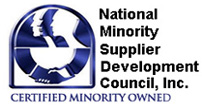HISTORIC AFRICAN AMERICAN SURVEYORS and/or EXPLORERS
Matthew Henson, circa 1900. He was an African American explorer and member of the 1909 expedition with American explorer Robert Peary that is credited with discovering the North Pole. (African American Registry, 2000 to 2013)
James Pierson Beckwourth, circa 1800. He was a Black explorer who played a major role in the early discovery and settlement of the American West.
York, circa 1800. York was a Black explorer that was a member of Lewis and Clark’s Expedition, Corps of Discovery. York was a scout and hunter that carried a gun, whom hone wilderness skills that would later become invaluable on the Lewis and Clark Expedition. (African American Registry, 2000 to 2013)
Harriet Tubman, circa 1850. Although historical references do not classified Harriet Tubman as an explorer, her navigation skills should not be overlooked. It is stated that Tubman made the perilous trip into slave country 19 times and escorted 300 slaves to freedom. Tubman navigated the “Underground Railroad” over dirt roads and rough terrain, by a method in contemporary practice is referred to as astronomical observation.
Benjamin Banneker, circa 1800. He was a self-taught, Black astronomer and mathematician. Banneker became interested in astronomy through a local surveyor named George Ellicott, who loaned him astronomy books. In 1791, George Washington commissioned George Ellicott and French engineer Pierre L’Enfant to help plan the construction of the nation’s capital on a ten-square-mile area of land. Ellicott asked Banneker to be his assistant. Celestial readings were key to measuring out the boundaries, and Ellicott knew Banneker’s excellent work in this area. At that time, with no advanced equipment for measuring land, an astronomer used the parallax effect to ascertain distances; Banneker’s primary job was making astronomical observations for the starting point of the survey maintaining a clock that was used to relate points on the ground to the positions of the stars at specified times. (Kelly, K. 2011-2014)
Jean-Baptist-Point Du Sable, circa 1770. He was a Black pioneer, trader, and founder of the settlement that later became the city of Chicago. (African American Registry, 2000 to 2013)
Juan Garrido, circa 1500. He was a Black African Spanish conquistador. He joined a Spanish expedition and arrived in Santo Domingo (Hispaniola) about 1502. He participated in the invasion of present-day Puerto Rico and Cuba in 1508. He is credited with the first harvesting of wheat planted in the New World for commercial purposes. (African American Registry, 2000 to 2013)
Esteban, circa 1530. Esteban was an enslaved African that explored the land that later became the United States. Esteban mastered several Native American languages which allowed him to serve as a translator. He traveled through what is now Texas, Arizona, New Mexico and Northern Mexico.
Stephen Bishop, circa 1840. Stephen Bishop was one of the first caves guides at Mammoth Cave in Kentucky. He discovered many miles of the Mammoth Cave.
